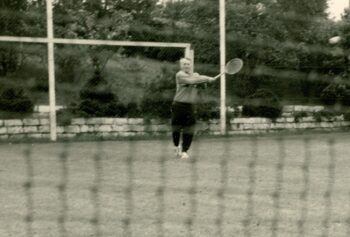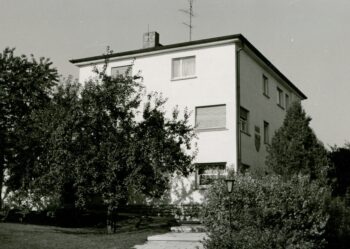
25. MAY 2022 THE DASSLER VILLA HAS BEEN DEMOLISHED
The locals have already stopped by to see it with their own eyes. They relocated their Sunday walks to stroll along the river Aurach, then crossed Hanns-Maier-Street, to reach "the Villa," or at least where it once stood. They gathered in amazement as they watched and took pictures with their cell phones. The headlines in the newspaper had forewarned, "Demolition of the Dassler Villa is imminent." The former mayor of Herzogenaurach, Hans Lang, stood stunned at the construction fence during the onsite meeting, "The office building is gone, the villa is gone, everything is a single pile of rubble."
All that was missing was for him to say, adidas' history is lost! And with that, he would have been a bit right.
The Villa is now gone, and with it, fifty years of adidas history flattened. Feelings of melancholy and frustration are understandable. Many have felt dismayed over the decision to demolish the Villa, a treasure trove of history. Katharina Zollhöfer from the Junge Union expressed her disappointment at the public building committee meeting, "The Villa is part of Herzogenaurach's history and would certainly also be attractive for tourists." Nevertheless, the decision was made to tear the Villa down to make way for new structures.
The Villa's history takes us back to 1934 when newly married, Käthe moved to Herzogenaurach to be with her husband, Adi Dassler. Herzogenaurach is where Adi and his brother Rudolf had their new headquarters built just two years earlier, on Kreuzgasse. They wanted the Villa to have a modern yet classic feel, with inspiration drawn from Bauhaus and Le Corbusier. It was beautifully designed with a top-floor living space that boasted a spacious rooftop balcony on the east side.
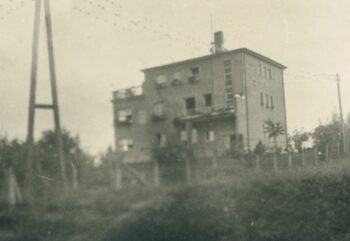
The Villa was built on a slightly elevated spot just behind the factory; Adi promptly renamed their new home "the Villa." They were deliberate in their choice of the proximity of the Villa to the factory and offices, seeking the closest possible connection between work, family, and home.
When the Dassler brothers' company (“Gebrüder Dassler”) had grown to twelve employees in 1927, they needed to expand and find a new factory location. Rudolf and Adi found precisely what they were looking for at the train station in Kreuzgasse, a factory that the Herzogenaurach Cobblers built in 1899. At first, the Dassler brothers rented the space, but they would later purchase it. Christoph Dassler, the chronicler of his sons' enterprises, wrote in 1930 in the newspaper Herzogenauracher Heimatblatt, "Today it houses the sports shoe factory of Gebrüder Dassler with exports to Switzerland, Holland, Austria, Czechoslovakia, England, and Greece."
Adi and Käthe lived on the ground floor of the Villa. On the middle floor lived Rudolf with his wife Friedl, whom he had married in 1928, and their first son Armin. The top floor belonged to the parents, Christoph and Paulina.
It was communal living for convenience's sake; the company was also a real family affair. Rudolf took care of sales and marketing. Adi, the tireless, hands-on shoemaker, often lost himself in his work at the factory and the machines, being grateful for the short commute home, his black curls often still dusted with white milling powder. Christoph and Paulina were involved in the production process. Even the husband of Maria Dassler, the sister of the two company owners, worked in the business, Simon Körner guided the cutters. Maria's son Friedrich (born in 1914) also worked there. Desired or hated, the closeness of the family was inescapable at work and at home in the Villa.
With time Rudolf and Adi's families lived more divergently, rather than peacefully, under one roof. Meanwhile, the factory on Kreuzgasse had many successes. Most notably, in 1936 when the American track and field star Jesse Owens ran and jumped his way to four gold medals at the Olympic Games in Adi Dassler's shoes.
The Villa was a place of safety, hope, and comfort. The two brothers had come from a working-class family, survived the First World War, built a business, survived the Great Depression, and were number one in the country with their sports shoes. They were on the verge of unbelievable success and achievements.
But those big dreams had to wait; the Nazis were in power. The Villa became a retreat during a terrible time. Käthe and Adi Dassler tried to maintain a peaceful refuge for their family. They carefully and consciously celebrated Easter, Christmas, and birthdays to shield their children (even if just for that day) from what was happening out in the world. Adi went to work and kept the business running as best he could.
He managed to keep working and keep his employees working, even while Hitler was becoming more erratic and horrific by the day. Adi had to be cautious and keep a low profile, but he kept the company alive. When the war finally ended, Adi had managed to keep the company running. Within the joy of the end of the war, there was also sorrow; Adi's father, Christoph, died on April 2nd, 1945. When the Americans arrived in Herzogenaurach on April 17th, 1945, they seized the Villa as their headquarters; the entire Dassler family had to vacate the Villa immediately.
Adi and Käthe moved their young family into "The Tower." The Tower was built in 1935 as an extension of the factory; it would provide them refuge for the next 13 years. The early years were full of struggles and exhaustion, but through perseverance, they were followed by years of triumph. adidas, that was an economic miracle come true.
The company became a global player; adidas triumphed on all continents. adidas won the 1954 World Cup in Bern, the 1974 World Cup in Germany, and all the Olympic Games and championships. adidas supported athletes to achieve records, and Adi Dassler created hundreds of patents.
At the end of the 1950s, Käthe and Adi Dassler had five children. Their son Horst was already taking his first massive steps as an entrepreneur. The Dasslers were able to move back into the Villa, and in the time that followed, they rebuilt, added on, and spruced it up. Later, the property even had an indoor pool and a beautiful garden. Adi Dassler played tennis on his backyard court in the summer and ice hockey on the same court in the winter. He loved to watch the birds at the bird feeder, he had the anthills on his property protected with wire mesh, and his various dogs always had their special places of honor throughout the Villa.
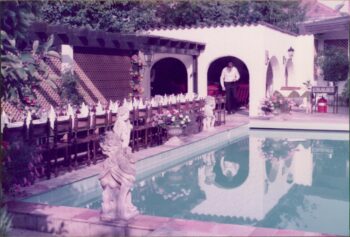
The household ran smoothly between Käthe and the omnipresent and irreplaceable Vroni. Vroni took care of the Dassler daughters, the guests, the kitchen, and the home. And she would continue to do so for 40 years.
Many years later, Vroni reminisced about how she found her place and voice in the household. She did so with the relaxed casualness and confidence of a woman who knew she had done her best and had done well. "The top floor was mostly guest rooms, three doubles and one single. One room was for Horst, with a private bathroom. The company grew quickly, and we had many guests from the very beginning. There was always at least one occupied room; often, all rooms were full. That was a lot of work. When one person left, I cleaned the room and prepared it for the next visit; it was like a little hotel. And then we had the invitations to the 'B-Room.' Whole Bundesliga teams ('B' for 'Bundesliga' - the soccer league) came and always had a huge appetite; they never left hungry."
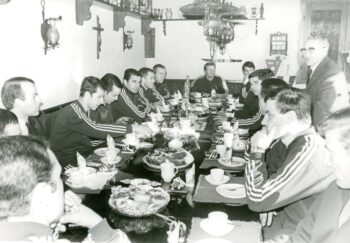
Adi Dassler died in 1978, and his wife Käthe in 1984. After that, Vroni looked after the Villa for several more years. She was in the Villa every day. She kept the dust out of the house, washed the curtains, and kept everything pristine.
Then she also retired.
And now it has all been torn down. It is, as Hans Lang says, a shame. And then he says something else.
"I hope they at least leave the Tower standing."
